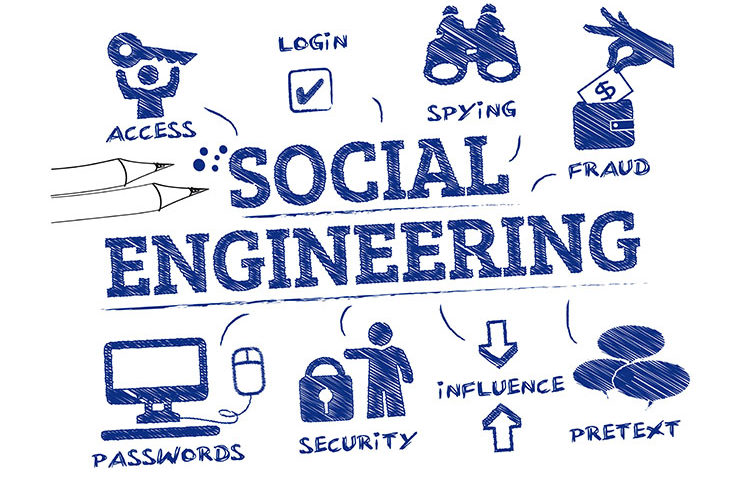What is a Social Engineering?
The Human Element: Why “Social Engineering Knowledge” is Your Best Defense
In today’s digital age, we often hear about sophisticated cyberattacks, complex malware, and impenetrable firewalls. But what if I told you that one of the biggest vulnerabilities in any security system isn’t a line of code or a piece of hardware, but something far more unpredictable: you?
This is where “social engineering knowledge” comes into play. It’s not about being a hacker; it’s about understanding the tactics used by those who manipulate human psychology to gain access to information, systems, or assets. Think of it as a form of highly persuasive con artistry, often conducted online, but equally effective in person.
What Exactly is Social Engineering?
At its core, social engineering is the art of manipulating people into divulging confidential information or performing actions that benefit an attacker. It bypasses technical security controls by exploiting the most powerful, yet often weakest, link in the security chain: the human being.
Attackers leverage common human traits like trust, helpfulness, curiosity, fear, and even a sense of urgency to trick their targets. They don’t “hack” systems; they “hack” people.
Common Social Engineering Tactics (and How to Spot Them):

Understanding these tactics is your first and best line of defense.
- Phishing (and its many variants):
- How it works: This is the most common. Attackers send fake emails, texts (smishing), or instant messages (vishing) that appear to be from legitimate sources (banks, colleagues, popular services, government agencies). They aim to trick you into clicking malicious links, downloading infected attachments, or revealing credentials on fake login pages.
- What to look for:
- Urgency/Threats: “Your account will be suspended if you don’t act now!”
- Grammar/Spelling Errors: Often subtle, but a red flag.
- Generic Greetings: “Dear Customer” instead of your name.
- Suspicious Sender Address: Hover over the sender’s email address – does it match the legitimate company’s domain?
- Unexpected Attachments/Links: Don’t click on links or open attachments if you weren’t expecting them, even if they seem to be from someone you know. Verify separately.
- Pretexting:
- How it works: The attacker creates a fabricated scenario (a “pretext”) to engage a victim and gather information. They might pretend to be an IT support person needing your password to “fix” an issue, or a new employee needing help accessing a system.
- What to look for: Anyone asking for sensitive information (passwords, PII) over the phone or email, especially if they initiated the contact and sound “official” but vague. Always verify their identity through an independent, known contact method.
- Baiting:
- How it works: Attackers leave a malware-infected device (like a USB drive) in a public place, hoping someone will pick it up and plug it into their computer, infecting the system. Online, it can involve offering “free” downloads of movies or software that are actually malware.
- What to look for: Be extremely wary of unsolicited physical media or “too good to be true” digital offers. If it’s free and unexpected, there might be a hidden cost.
- Tailgating/Piggybacking:
- How it works: Gaining unauthorized access to a restricted area by following closely behind someone who has legitimate access. They might pretend to be a delivery person or someone who forgot their badge.
- What to look for: Always be aware of who is entering secured areas behind you. Don’t hold the door open for unknown individuals in restricted zones.

Why is This Knowledge Crucial for Everyone?
- You are a Target: Whether you’re an individual with a bank account or an employee with access to company data, you are a potential target.
- Prevent Financial Loss: Social engineering is a primary method for identity theft and financial fraud.
- Protect Your Privacy: Attackers aim to gain access to your personal information, photos, and communications.
- Safeguard Your Organization: For businesses, a successful social engineering attack can lead to data breaches, ransomware infections, reputational damage, and significant financial losses.
Your Best Defense: A Healthy Dose of Skepticism and Verification
The most effective way to protect yourself and your organization from social engineering attacks is to cultivate a mindset of healthy skepticism and to always verify before you trust.
- Pause and Ponder: Before you click, download, or share any information, take a moment to think:
- Is this email/message expected?
- Does the sender’s address look legitimate?
- Is the request unusual or urgent?
- Does it sound too good to be true?
- Verify, Verify, Verify:
- If someone calls claiming to be from your bank or a company, hang up and call them back using the official number listed on their website (not a number they provide).
- If an email seems suspicious, do not reply or click links. Instead, navigate directly to the official website of the organization in question.
- If a colleague sends you an unexpected request or link, verify it with them through a different communication channel (e.g., call them, or send a new email).
- Educate Yourself and Others: Share this knowledge with your friends, family, and colleagues. The more aware everyone is, the harder it becomes for social engineers to succeed.
Understanding social engineering isn’t just about cybersecurity; it’s about being street-smart in the digital world. By knowing how attackers try to manipulate you, you empower yourself to recognize the red flags and become an incredibly resilient human firewall. Stay vigilant!